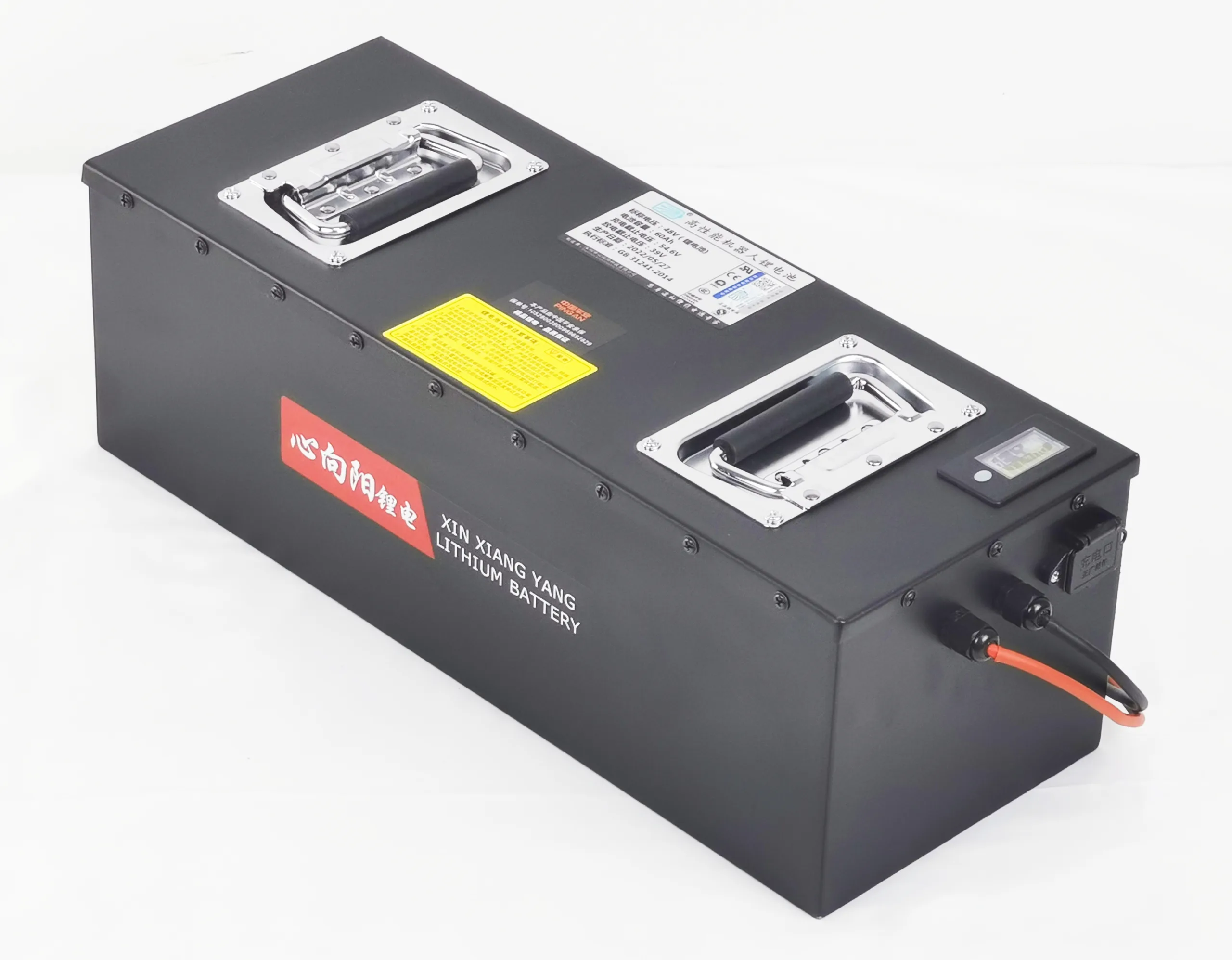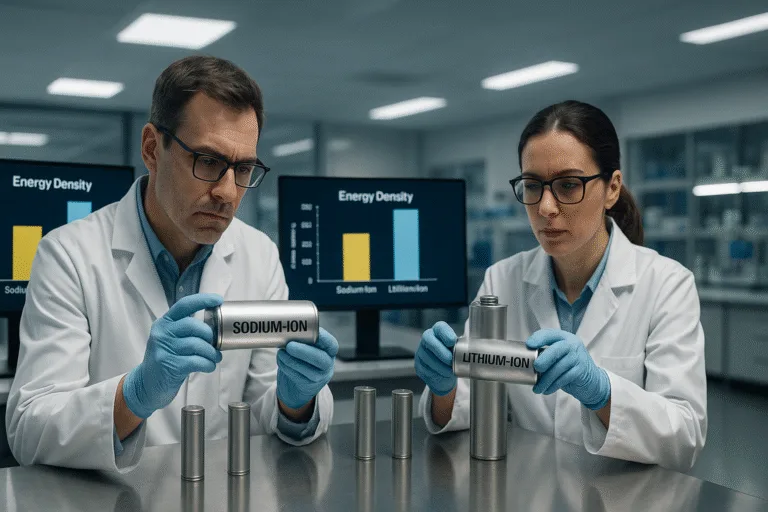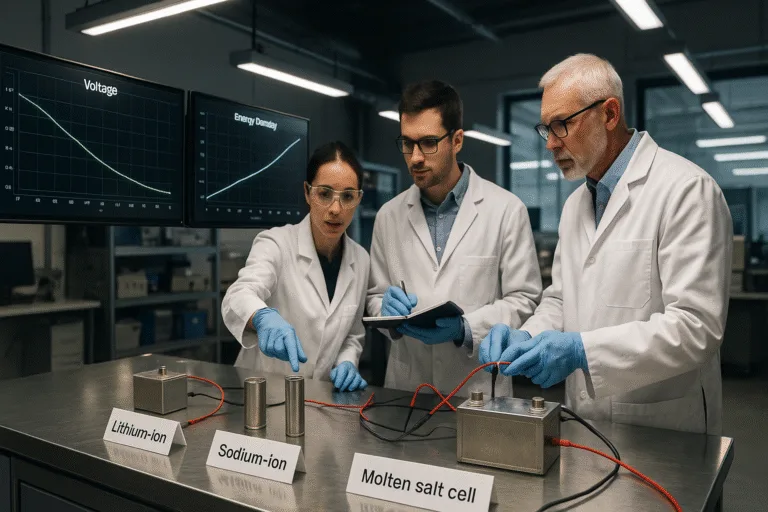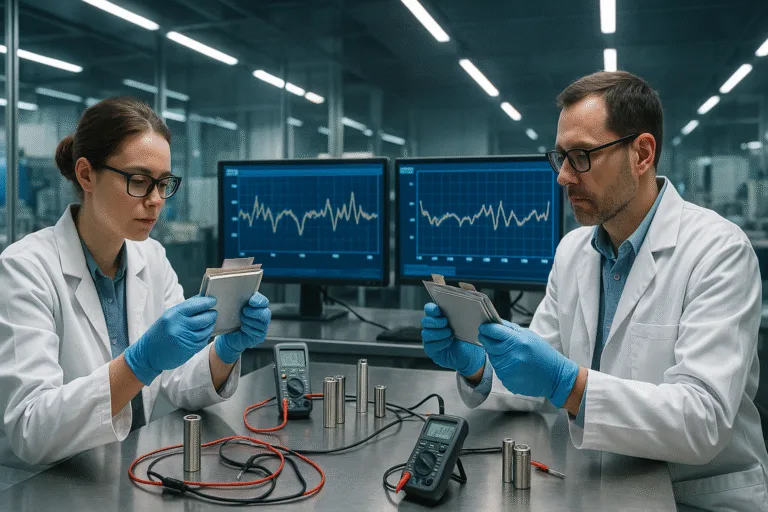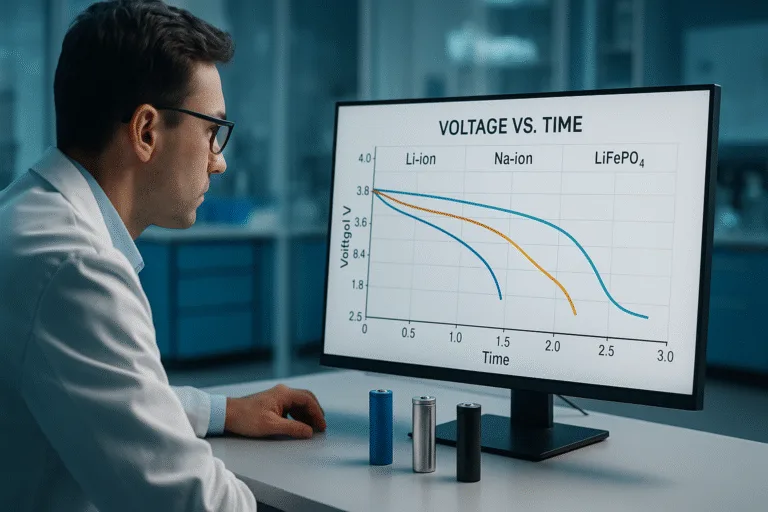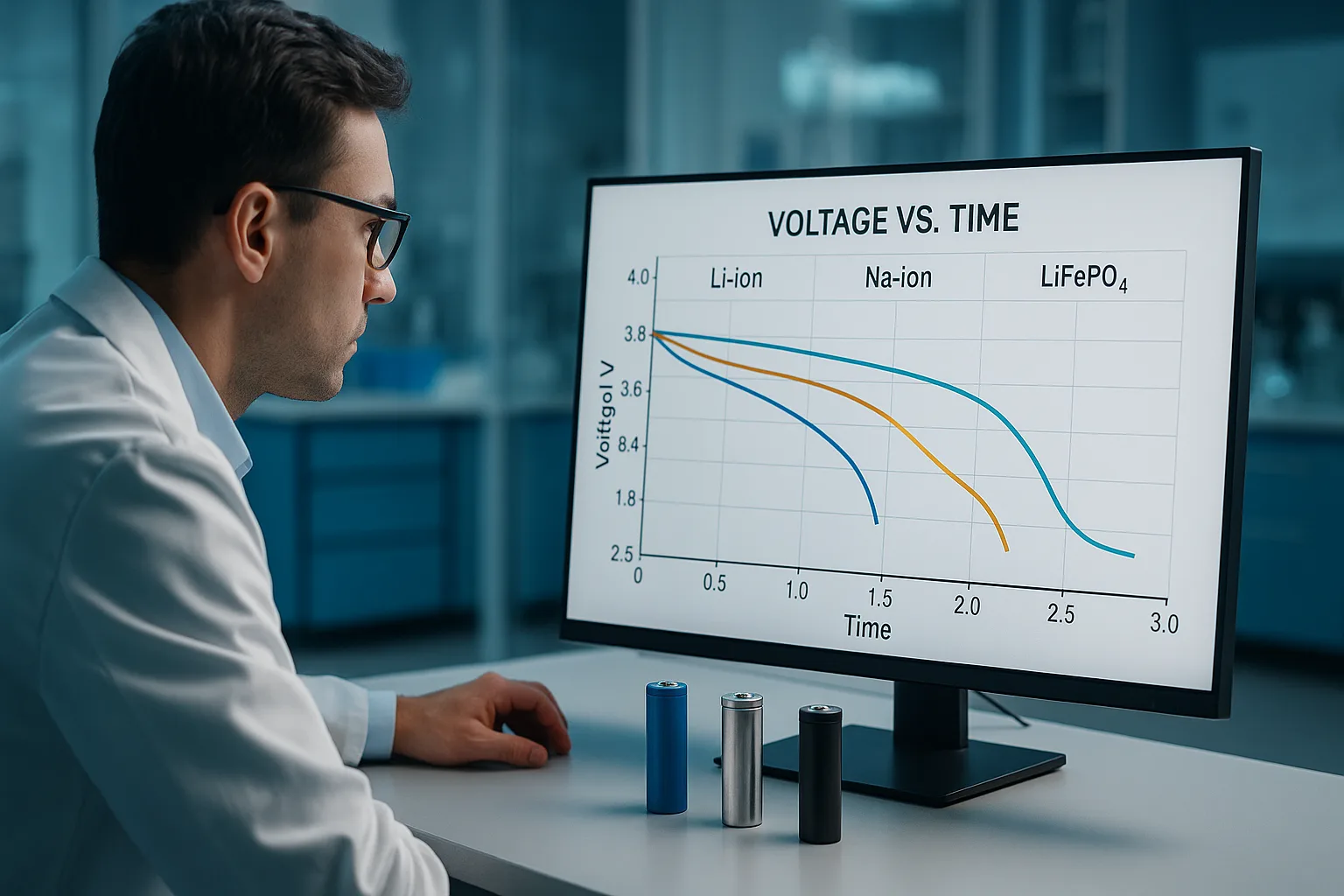
Navigating the world of battery technology can be difficult. Choosing the wrong battery for an application or handling one incorrectly can lead to poor performance, project delays, or serious safety hazards.
The best battery is always the one matched to the job. For long-term storage, LiFePO4 is the safest. For travel power banks, strict airline rules (under 100 Wh) are the most important design factor. Never mix old and new cells when making repairs.
I remember consulting for a startup that was building a new portable device. They chose a high-energy battery for its small size, but it was not safe enough for their application. We had to redesign the power system, which cost them time and money. Understanding these key facts from the start is critical.
What are the pros and cons of sodium-ion batteries?
You are hearing a lot about sodium-ion (Na-ion) as the next big thing. It is a major competitor to lithium-ion, but it has important trade-offs.
Sodium-ion batteries are a major breakthrough. Their main pros are very low cost, high safety (less fire risk), and abundant raw materials. Their main con is a lower energy density, meaning they are heavier for the same amount of power.
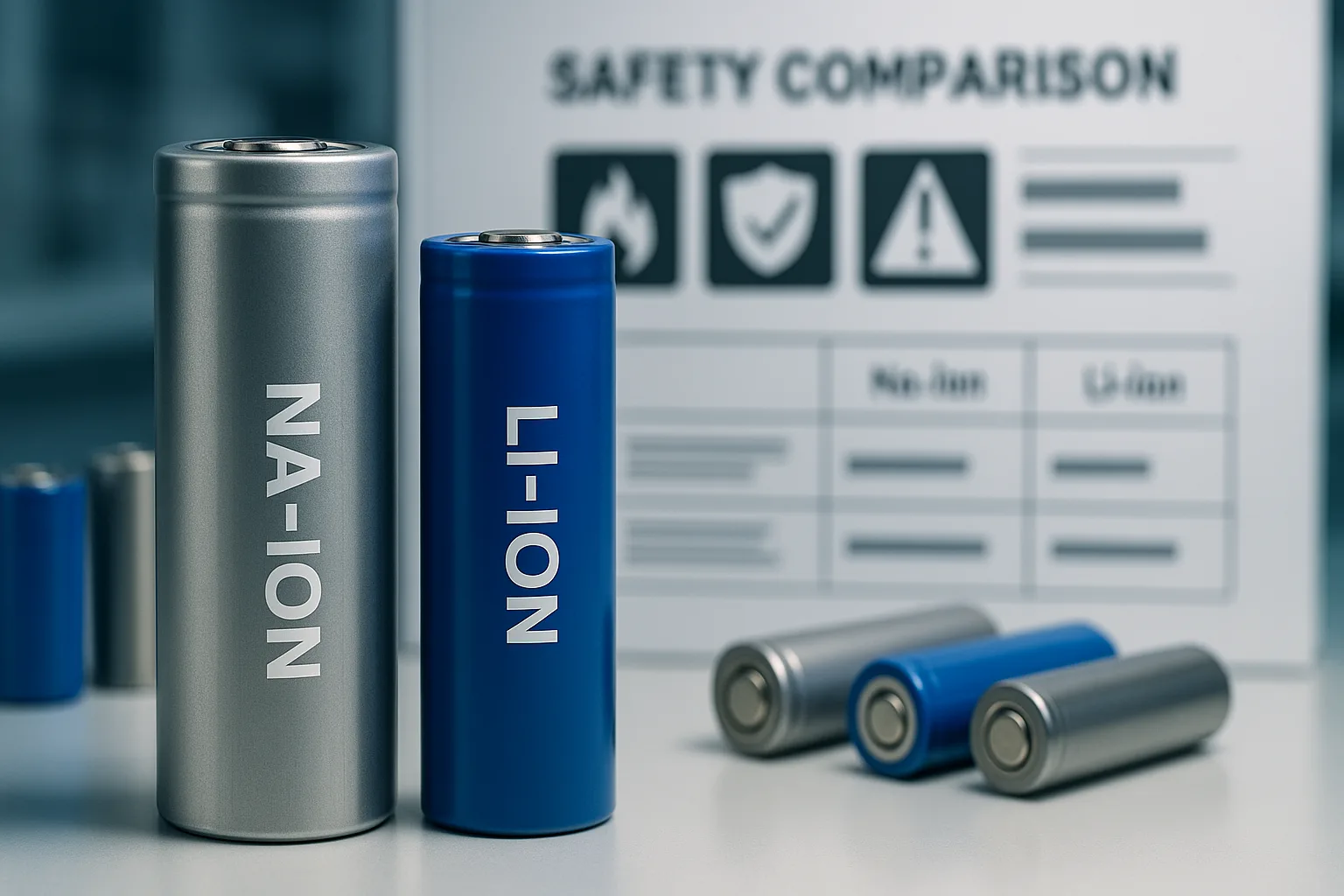
The Engineering Trade-Off
As a battery manufacturer, we are very excited about sodium-ion. Here is a direct comparison of why you would choose it over a traditional lithium-ion (NMC) battery.
| Feature | Sodium-Ion (Na-ion) | Lithium-Ion (NMC) |
|---|---|---|
| Main Advantage | Cost & Safety | Energy Density |
| Raw Materials | Abundant sodium (salt), aluminum | Scarce lithium, cobalt, copper |
| Safety | Excellent. Less fire risk. Can be shipped at 0V. | Good, but has thermal runaway risk1. |
| Temperature | Excellent performance in extreme cold and heat. | Performance drops in extreme cold. |
| Energy Density | Lower (140-175 Wh/kg) | High (220-270+ Wh/kg) |
| Maturity | New, supply chain is still growing. | Very mature and established. |
Sodium-ion is not for lightweight drones or high-performance EVs yet. But for stationary energy storage2 or low-cost vehicles where weight is less important, it is a game-changer.
What are the best battery types for long-term energy storage?
For "long-term," you need a battery that is safe, reliable, and has a very long cycle life. You are not worried about weight, you are worried about value and safety.
For home or grid-scale energy storage, Lithium Iron Phosphate (LiFePO4) is the best all-around choice. It offers the best balance of safety, a 10-15 year lifespan, and proven reliability. Flow batteries are an emerging option for massive, grid-level storage.
Why LFP Dominates Storage
When you build a solar energy system for a home, you need a battery you can trust for a decade or more. High-energy batteries like the ones in your phone are the wrong choice.
- Lithium Iron Phosphate3 (LFP / LiFePO4): This is the king of home storage. It is a type of lithium-ion, but it uses a different chemistry that is not prone to thermal runaway (fire). It lasts 5,000+ cycles, giving you 10-15 years of daily use.
- Sodium-Ion (Na-ion): This is the new, low-cost challenger. It has many of the same safety benefits as LFP and will likely become a major competitor in this space as production grows.
- Flow Batteries: These are for huge, utility-company-sized projects. They store energy in liquid electrolytes in giant tanks. They can store power for very long durations (10+ hours) and have an almost infinite lifespan, but they are too complex and large for home use.
How can you safely replace lithium-ion cells?
This is a job for experts. As a manufacturer, I must warn you: working on lithium-ion packs is dangerous. A single mistake can cause a fire.
The safest rule is to replace all cells in a pack at the same time. Never mix old and new cells. If you must replace a single cell, it must be the exact same model and must be manually balanced to the exact same voltage as the rest of the pack before you install it.
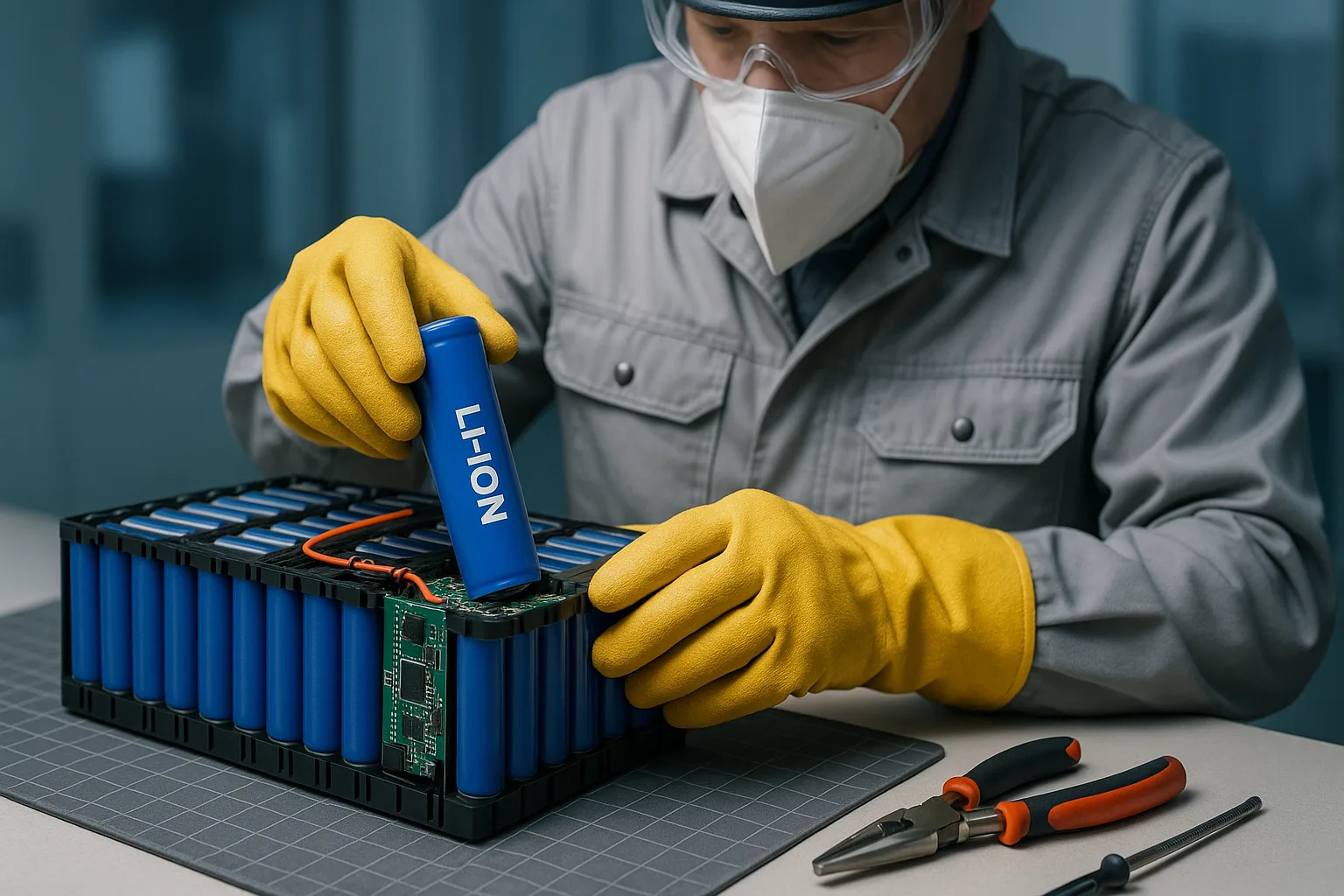
Critical Safety Steps
If you are an engineer or trained technician, here is the safety-critical process.
- Safety First: Wear insulated gloves and safety goggles. Work in a non-flammable area.
- NEVER Repair Swollen Cells: If a battery pack is swollen, do not touch it. It is a fire hazard. Take it to a proper disposal facility immediately.
- Disconnect the BMS: Before you touch any cell, you must fully disconnect the Battery Management System (BMS)4. Failing to do this can destroy the BMS or cause a short circuit.
- Match the Cell: The replacement cell must be the identical brand, model, and chemistry.
- Balance Voltage: This is the most important step. Use a multimeter and a special charger/discharger to get the new cell to the exact voltage of the other cells in its group (e.g., 3.75V). Installing a cell with a different voltage will cause a huge, dangerous rush of current.
- Rebuild and Test: Reconnect the cells and then test the wiring harness before you reconnect the BMS.
What are the key differences between NiMH and Li-ion batteries?
This is a classic comparison. Nickel-Metal Hydride (NiMH) batteries were the standard before lithium-ion took over. They have very different strengths.
The main difference is energy density. Lithium-ion (Li-ion) batteries store 2-3 times more power in the same weight and have a higher voltage (3.7V vs 1.2V). NiMH batteries are heavier and suffer from "memory effect," but they are often cheaper.
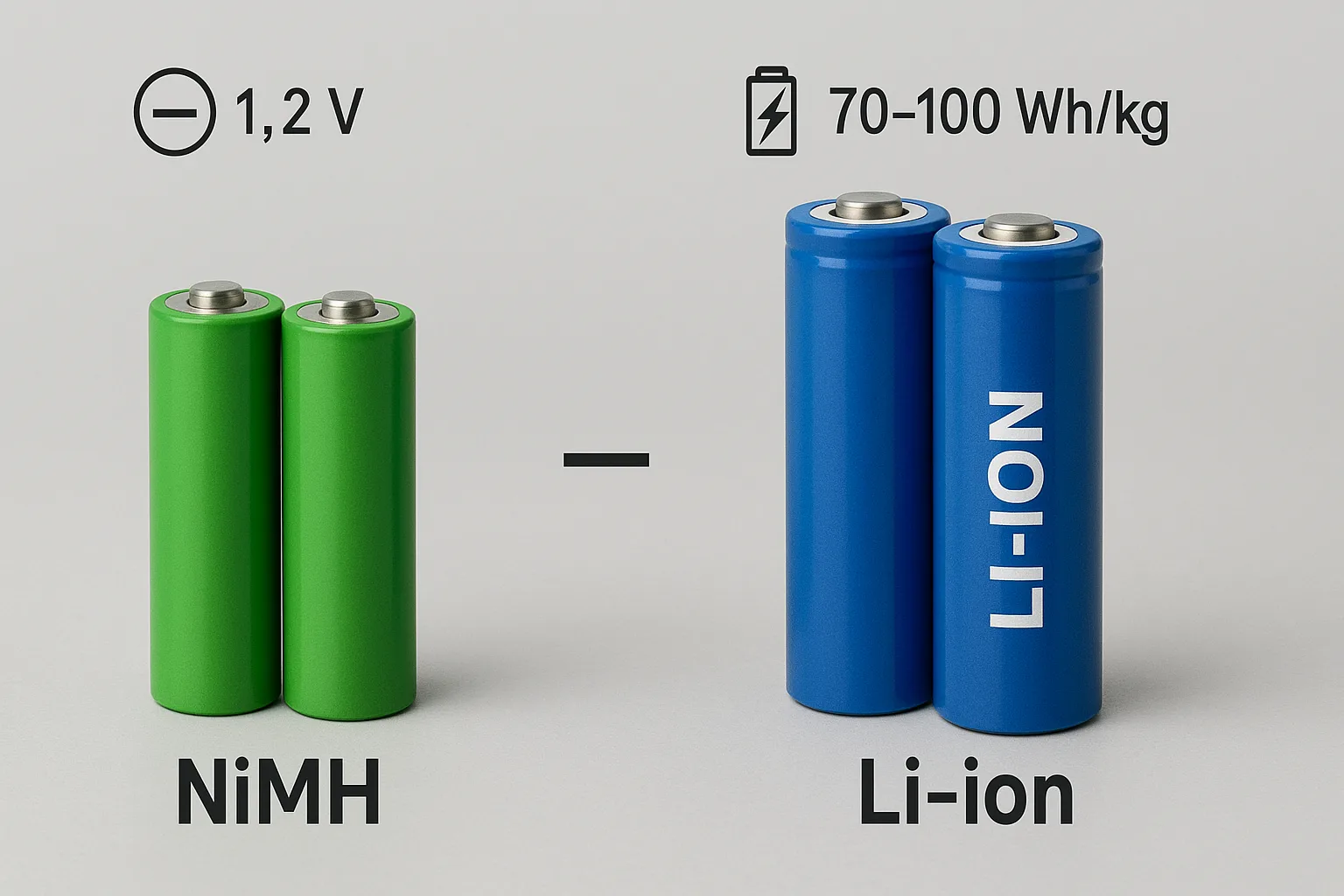
A Direct Comparison
We still get requests for NiMH packs for certain applications where cost and simplicity are key.
| Feature | NiMH (Nickel-Metal Hydride) | Li-ion (Lithium-Ion) |
|---|---|---|
| Energy Density | Lower (60-120 Wh/kg) | Higher (150-250+ Wh/kg) |
| Nominal Voltage | Low (1.2V per cell) | High (3.7V per cell) |
| Memory Effect | Yes. Must be fully discharged. | No. Can be partially charged. |
| Self-Draining | High (loses charge fast in storage) | Low (holds charge well) |
| Weight | Heavier for the same power | Lighter and more compact |
| Safety | Generally very safe | Requires a BMS for safety |
This is why your laptop and phone use Li-ion (they need to be light with a long runtime) while some rechargeable AA batteries are still NiMH.
Conclusion
Understanding battery safety and applications is key to good design. Choose LiFePO4 for safety, Li-ion for high energy, and Sodium-ion for low cost. And when in doubt, never attempt a repair on a damaged lithium pack.
-
Understand the dangers of thermal runaway in Lithium-ion batteries and how it affects battery safety. ↩
-
Discover various energy storage solutions and their applications to find the best fit for your needs. ↩
-
Explore why Lithium Iron Phosphate is favored for home energy storage due to its safety and longevity. ↩
-
Understand the critical role of BMS in battery safety and performance, especially in Lithium-ion packs. ↩

